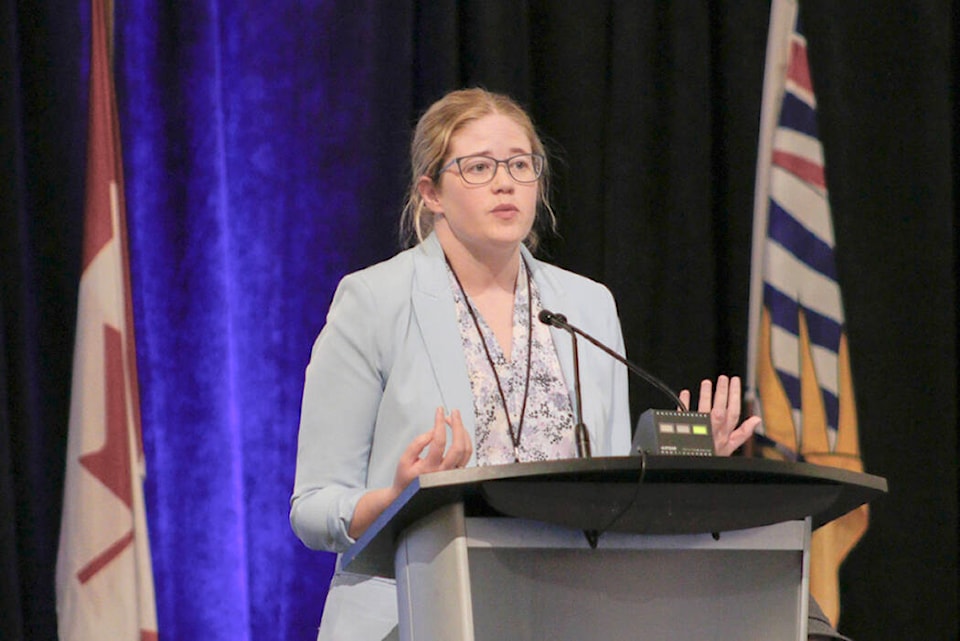Elected officials from around Vancouver Island discussed the future of emergency management at the Association of Vancouver Island and Coastal Communities convention.
A panel of five officials from municipalities, First Nations and the province spoke on the importance of updating the current Emergency Program Act during a session Friday, April 14, at Nanaimo’s Vancouver Island Conference Centre.
Ryan Wainwright, senior manager of Emergency Management Cowichan, said the act places control over emergency response preparedness and planning with local authorities.
“You manage the emergency from as close to the emergency as possible,” he said.
However, he suggested the current plan lacks language about mitigation, which he said is one of four facets of emergency management. He said an important part of emergency management is “understanding at the local government level, what and how intense the recovery period can be and how it can shift the entire identity of a community.”
He went on to speak on the importance of relationships in the community during an emergency and identifying “someone who will pick up the phone at 3 a.m.” but said since the COVID-19 pandemic, the number of those willing to volunteer are dropping.
“There’s a few communities who do very well, but most of us are struggling. Two years ago, the [Cowichan Valley Regional District] had maybe 100, 150 people that that were on a roll, now we have four,” he said. “There are not enough resources for each local government to receive gold-star service from the province during an emergency. We need to know that our partners at First Nations, local governments, municipalities and regional district municipalities are being supported, have a little horsepower, so that we can have these conversations while things are quiet. That is not the case right now. We’re expensive.”
Corey Anderson, Emergency Management B.C.’s senior manager for Vancouver Island and the coastal region, talked about how the current act requires every community to have an emergency operations centre which “turned out to be quite siloed,” and had “a lot of duplication of effort.”
There are three parts that “animate the spirit” of the new legislation, according to Katie Olthuis, the policy and legislation director of Emergency Management and Climate Readiness. She mentioned the Abbott-Chapman review, which provided more than 100 recommendations to the province for emergency preparedness, the 2018 adoption of the Sendai framework for disaster risk reduction which she described as an “all-of-society approach,” and the adaptation of the UN’s Declaration on the Rights of Indigenous Peoples.
Although there are already multiple policies in place, the panel highlighted the importance of continued collaboration with Indigenous governing bodies.
“These ideas about incorporating Indigenous peoples and the traditional knowledge to everything that we do is going to be key to having a better B.C.”, said Travis Hall, Central Coast Regional District and Nuxalk Nation representative. “B.C. is so diverse in terms of its geography, its climate, its altitude. Part of the province is desert, part of the province is ocean rainforest – we all have different emergencies. The the fact that we’re now incorporating Indigenous knowledge to these processes will be key to developing a more fulsome emergency strategy procedure.”
Mike Wilson, CVRD regional director for Cobble Hill, had concerns over funding for local authorities to implement new legislation, stating “we’re strapped.” Olthuis, however, said funding support plans are still in progress and “feedback we received from local authorities has been and will continue to be shared to help ensure local authorities are supported and resourced to meet their emergency management obligations.”
The legislation is expected to be in place this year, with regulations to come into effect over the next two years.
READ ALSO: Vancouver Island communities want to partner on regional homelessness strategy
bailey.seymour@nanaimobulletin.com
Like us on Facebook and follow us on Twitter



